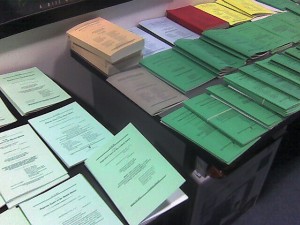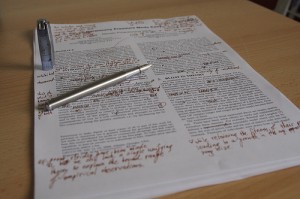Adopt a Consistent Cite-Checking Approach
Posted
10 Jun 2014 in Tips and Tactics
A primary brief author may work over a number of days on the brief, followed by review and alteration by other attorneys and the client. Sections of the brief may be emailed to others for comment. It can be hard to remember which case and statutory cites have been checked thoroughly. Even aside from cites that may be added by others, an attorney may run across a case supporting point X while focused on point Y. If the attorney adds the case to the draft brief in progress and returns to point Y, there may be nothing to distinguish that citation from the cites that have been checked.
Those who use Google Scholar and other imperfect sources of law need to track the cases located through that research to check them on Westlaw or Lexis because reconsideration may have caused alteration of the relevant paragraph. Subsequent history may turn a good cite into a bad one. Annotations may reveal a good or bad construction of a statute not shown by Internet sources for the statutes. Although the issue is especially acute with Google Scholar, the problem exists with every cite.
One solution to this recurring problem is
Sections of the brief may be emailed to others for comment. It can be hard to remember which case and statutory cites have been checked thoroughly. Even aside from cites that may be added by others, an attorney may run across a case supporting point X while focused on point Y. If the attorney adds the case to the draft brief in progress and returns to point Y, there may be nothing to distinguish that citation from the cites that have been checked.
Those who use Google Scholar and other imperfect sources of law need to track the cases located through that research to check them on Westlaw or Lexis because reconsideration may have caused alteration of the relevant paragraph. Subsequent history may turn a good cite into a bad one. Annotations may reveal a good or bad construction of a statute not shown by Internet sources for the statutes. Although the issue is especially acute with Google Scholar, the problem exists with every cite.
One solution to this recurring problem is









